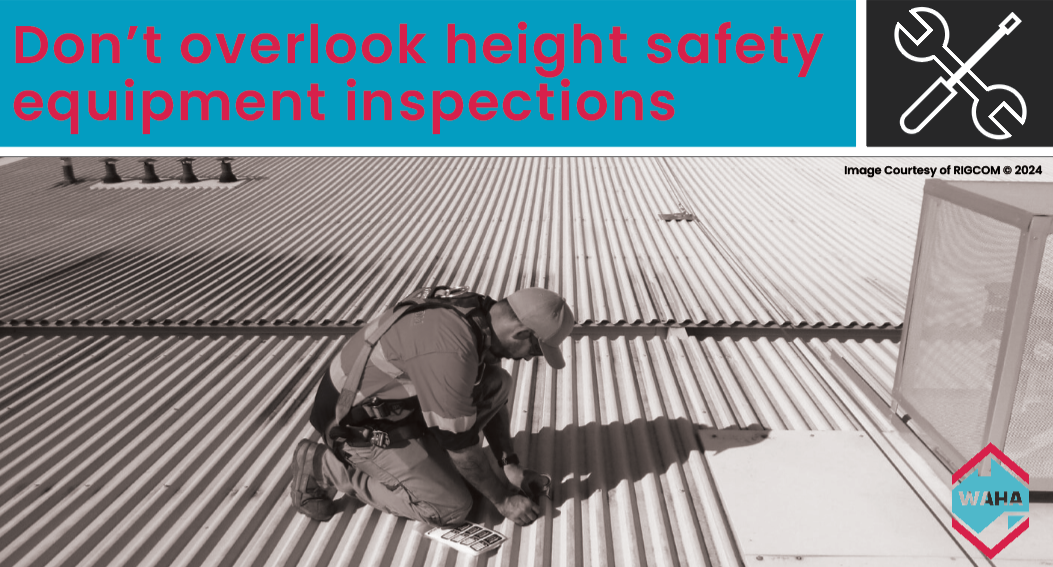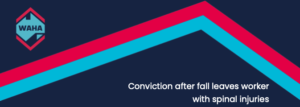
Article by WAHA Gold Member; RIGCOM.
When considering height safety systems installed to protect workers at height, the focus is often on their design, installation and use. However, an important step and your legal obligation as the owner and or provider of these assets are often overlooked, that is the management of their: Maintenance, Inspection, and Re-certification.
Don’t overlook height safety equipment inspections. Failing to implement a proper inspection regime poses significant risks to both the operator and the employer, as well as potential damage to plant and equipment.
The importance of height safety equipment inspection
Over time, frequent use, wear and tear and exposure to industrial environments can cause height safety and fall protection equipment and systems to deteriorate. In some instances, it can lead to failure. The significance of conducting regular equipment inspections cannot be overstated; it is of utmost importance. Regardless of industry and experience, the dangers of working at height are real, and the consequences of an incident are devastating. Let’s face it, accidents happen, and the last thing you need is for your equipment to fail when you need it most.
The maintenance, inspection and re-certification of your height safety equipment and systems is vital, which is why it is not only required under Australian and New Zealand Standards but also mandated by law in certain states. It is essential that competently trained and accredited individuals perform thorough testing, inspections and tagging to ensure equipment safety and compliance.
Your obligations under the standard
AS/NZS 1891.4 specifies requirements and sets out recommendations for the selection, safe use and maintenance of industrial fall-arrest systems and devices based on the use of safety harnesses, horizontal lifelines and rails, fall-arrest devices, and associated lanyards, connectors, anchorages and fittings. The standard outlines the recommendations for inspection to ensure that the items are in good working order and ensure the health and safety of workers exposed to a risk of injury from a fall.
The Standard requires that height safety equipment be:
- Inspected by a ‘Competent Person’ before and after use
- Inspected by a ‘Height Safety Equipment Inspector’ every six or twelve months (dependant on equipment type)
The Standard also stipulates that records of inspection and maintenance must be recorded in an inspection and maintenance log maintained by the company, and made available to operators, users of the equipment and regulators as required.






